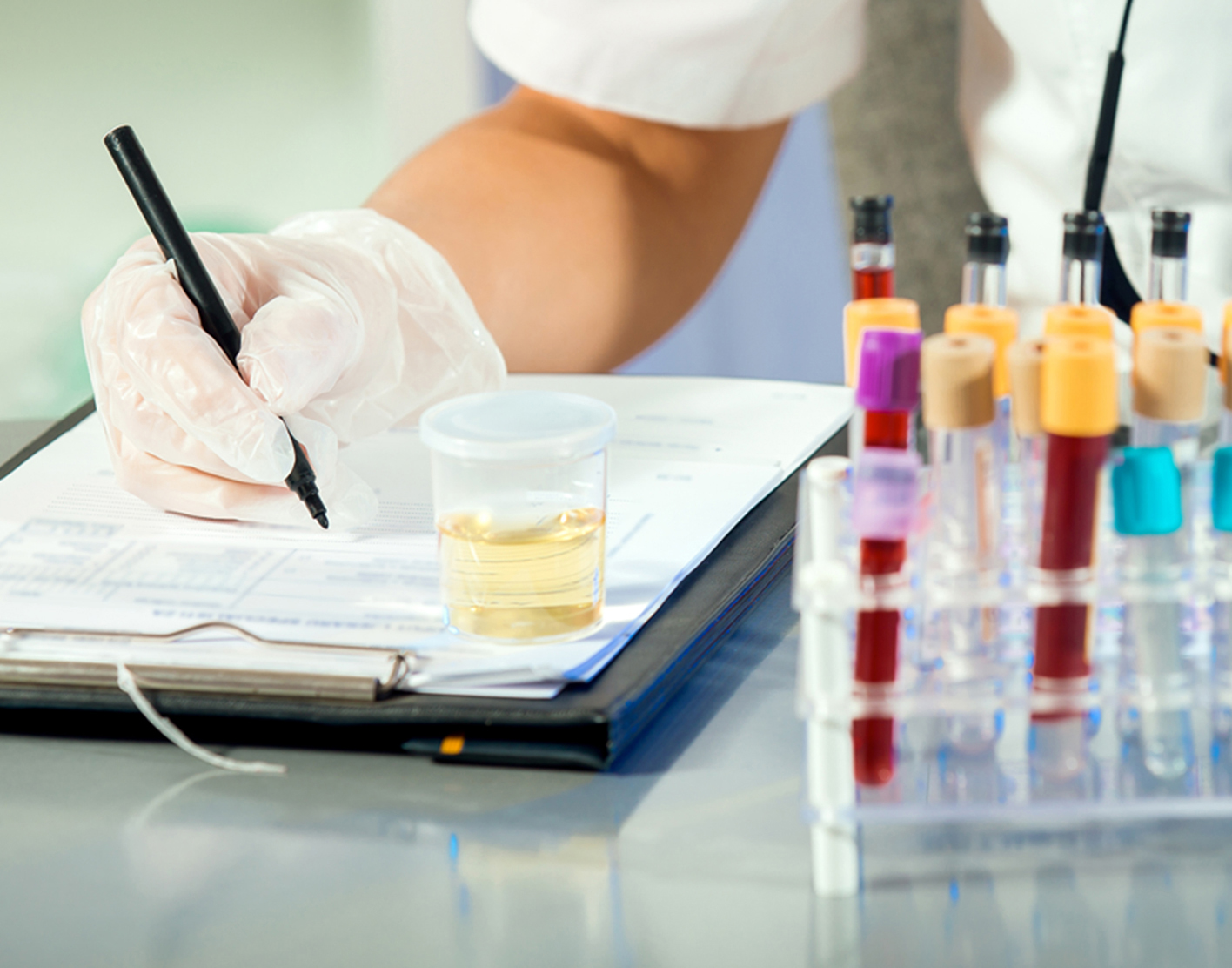
Osmolality urine test
Definition
The osmolality urine test measures the concentration of chemicals in urine.
Osmolality in the blood can be measured using a
How the Test is Performed
A
How to Prepare for the Test
Your provider may tell you that you need to limit your fluid intake 12 to 14 hours before the test.
Your provider will ask you to temporarily stop taking any medicines that may affect the test results. Be sure to tell your provider about all the medicines you take, including dextran and sucrose. Do not stop taking any medicine before talking to your provider.
Other things can also affect the test results. Tell your provider if you recently:
- Had any type of anesthesia for an operation.
- Received intravenous dye (contrast medium) for an imaging test such as a
CT scan orMRI . - Used herbs or natural remedies, especially Chinese herbs.
How the Test will Feel
The test involves normal urination. There is no discomfort.
Why the Test is Performed
This test helps check your body's water balance and urine concentration.
Urine osmolality is a more exact measurement of urine concentration than the
Normal Results
Normal values are as follows:
- Random specimen: 50 to 1200 mOsm/kg (50 to 1200 mmol/kg)
- 12 to 14 hour fluid restriction: Greater than 850 mOsm/kg (850 mmol/kg)
Normal value ranges may vary slightly among different laboratories. Some labs use different measurements or test different samples. Talk to your provider about the meaning of your specific test results.
What Abnormal Results Mean
Abnormal results are indicated as follows:
Higher than normal osmolality may indicate:
- Adrenal glands do not produce enough hormones (
Addison disease or other types of adrenal insufficiency) - Glucose (a type of sugar) in the urine
Heart failure - High sodium level in the blood
Loss of body fluids (dehydration)- Narrowing of the kidney artery (renal artery stenosis)
Shock - Syndrome of inappropriate ADH secretion (
SIADH )
Lower than normal osmolality may indicate:
- Damage to kidney tubule cells (
renal tubular necrosis ) Diabetes insipidus - Drinking too much fluid
- Kidney failure
- Low sodium level in the blood
- Severe kidney infection (pyelonephritis)
Risks
There are no risks with this test.
References
Kashkouli A, Berl T, Sands JM. Disorders of water metabolism. In: Johnson RJ, Floege J, Tonelli M, eds. Comprehensive Clinical Nephrology. 7th ed. Philadelphia, PA: Elsevier; 2024:chap 9.
Oh MS, Briefel G, Pincus MR. Evaluation of renal function, water, electrolytes, and acid-base balance. In: McPherson RA, Pincus MR, eds. Henry's Clinical Diagnosis and Management by Laboratory Methods. 24th ed. Philadelphia, PA: Elsevier; 2022:chap 15.
Review Date: 20/08/2023
The information provided herein should not be used during any medical emergency or for the diagnosis or treatment of any medical condition. A licensed physician should be consulted for diagnosis and treatment of any and all medical conditions. Call 911 for all medical emergencies. Links to other sites are provided for information only -- they do not constitute endorsements of those other sites. Copyright ©2019 A.D.A.M., Inc., as modified by University of California San Francisco. Any duplication or distribution of the information contained herein is strictly prohibited.
Information developed by A.D.A.M., Inc. regarding tests and test results may not directly correspond with information provided by UCSF Health. Please discuss with your doctor any questions or concerns you may have.



























